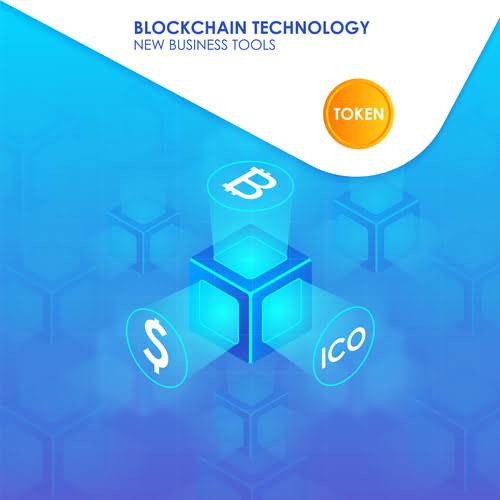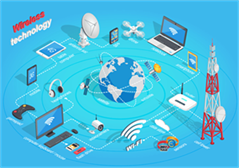Content
Operators can also save money by reducing the amount of data that actually needs to be sent back to the central data center for processing. Sending all that device-generated data to a centralized data center or to the cloud causes bandwidth and latency issues. Edge computing offers a more efficient alternative; data is processed and analyzed closer to the point where it’s created. Because data does not traverse over a network to a cloud or data center to be processed, latency is significantly reduced. Edge computing — and mobile edge computing on 5G networks — enables faster and more comprehensive data analysis, creating the opportunity for deeper insights, faster response times and improved customer experiences.
In effect, edge computing is used to “steer” traffic across the network for optimal time-sensitive traffic performance. Fog computing environments can produce bewildering amounts of sensor or IoT data generated across expansive physical areas that are just too large to define anedge. Technological advances are allowing enterprises to shift more and more workloads to the network edge. This ensures low latency, which facilitates real-time applications, and lower bandwidth requirements. At the same time, edge computing also frees up resources and money in the cloud, where demanding big data calculations require maximum performance. Zenlayer provides powerful services that can take your business closer to users at the edge of the network.

This can be seen in the proliferation of compute, storage and network appliance products specifically designed for edge computing. More multivendor partnerships will enable better product interoperability and flexibility at the edge. An example includes a partnership between AWS and Verizon to bring better connectivity to the edge. Perhaps the most noteworthy trend is edge availability, and edge services are expected to become available worldwide by 2028. Where edge computing is often situation-specific today, the technology is expected to become more ubiquitous and shift the way that the internet is used, bringing more abstraction and potential use cases for edge technology.
Risky Business: 3 Network Problems In Plain Sight
Edge computing helps address these challenges by allowing organizations to analyze data closer to where it’s collected, rather than after it’s sent to the cloud. Although the Internet has evolved over the years, the volume of data being produced everyday across billions of devices can cause high levels of congestion. In edge computing, there is a local storage and local servers can perform essential edge analytics in the event of a network outage.
The data can’t be transferred off-site because of security concerns or privacy regulations. The company can create a forecast in the cloud to predict how many waffle fries should be cooked per minute over a day — easy when using transactional sales data. The Mississippi Department of Revenue chose an all-flash storage and backup setup to maximize app performance and minimize … Administrators who manage many users can go one step further toward streamlining license assignments by taking advantage of a new…
Program Preview: A Live Look At The Caltech Cloud Computing Bootcamp
With a larger number of smaller data centers, everyone can get better service. While edge computing works very much like regular cloud computing for the end-user, edge devices share the computing task with servers. Centralized, co-located cloud computing is still needed for performance and cost.
You’ll notice the performance drop off even more if the cloud service is in high demand at the time. Data center and networking costs are skyrocketing, due to higher https://globalcloudteam.com/ network traffic and computing workloads. With edge computing, you can transfer computational functions off of the core network, reducing bandwidth and saving money.

Games require more data to stream than other forms of media because gaming requires reacting to user input. Processing some commands or distributing graphics rendering may reduce connection requirements and latency. For example, edge devices still need an internet connection for maximum utility. However, any connection to the internet is a potential opportunity for hackers. Just like the old Wild West’s bank robbers might attack the coach rather than the bank, whether or not the cloud itself is secure isn’t necessarily the problem if hackers can get data while it moves from the device to the cloud. Cloud computing is carried out by a network of connected servers in a data center.
In this case, data accumulating at the endpoints can be aggregated and processed locally. The already structured data sets are then transferred to the cloud for final processing. This approach also speeds up the overall process while at the same time reducing the requirements for bandwidth and computing power in the cloud. The internet of behaviors , users can access the data, files, content, and information they need over the internet, whenever and wherever they may choose. No longer are users tethered to in-house or local computing where data is stored physically on a single device.
What Is Edge Computing? Everything You Need To Know
Edge computing has taken off because sending all of the data generated by IoT devices and IIoT devices to a centralized data center for processing and storage results in latency and bandwidth issues easily solved by edge computing. After the data is processed, results can be delivered back to the device or application for action, and only relevant data will be sent back through the cloud, reducing bandwidth needs. With the continuous rise of IOT or smart devices, the demand to process the data generated is constant. On top workforce, information and infrastructure are not limited to a few enterprises defined locations. This decentralization demands decentralized processing and storage as transporting volume of traffic to and from central systems is as inefficient as it’s expensive.

Data is collected and analyzed to find the effects of environmental factors and continually improve the crop growing algorithms and ensure that crops are harvested in peak condition. Edge computers deployed at the edge are often ruggedized to endure the challenging environments in which they are deployed. Systems deployed in factories, manufacturing facilities, and outdoors must be able to tolerate exposure what is edge computing with example to harsh environmental conditions that regular, consumer-grade desktop computers are not capable of handling. Server resources are effectively allocated via virtualization, and these servers are highly flexible. Securely manage the use of files and applications for office environments while storing large amounts of data. Scalable parallel computing GPU dense servers that are built for high performance.
How Does Edge Computing Work
VMware Cross-Cloud™ services enable organizations to unlock the potential of multi-cloud with enterprise security and resiliency. This solution provides best-of-breed Dell Technologies infrastructure delivered as pre-tested infrastructure with extensive deployment guidance. The goal with the Couchbase platform, and with edge in general, is to move data closer to where it is being used, even when it is in motion, to ensure that apps always have access to it. “Customers increasingly require mobile and edge capabilities to meet modern application demands, and data must always be available, so apps perform at unmatched speed,” Carter said. Clearly, edge computing allows for faster data transfer, leading to better performance.
- The goal with the Couchbase platform, and with edge in general, is to move data closer to where it is being used, even when it is in motion, to ensure that apps always have access to it.
- While data warehouses and server farms were once considered to be the ultimate choice for computing speed, the focus has quickly shifted to the concept of cloud or “offsite storage”.
- Think about a 24-hour security camera; most of the data is inconsequential, and not the best use of data center storage.
- But it’s at the edge where each store micro-adjusts the initial forecast with specific on-site, real-time data from their kitchen and point-of-sale systems.
Edge computing is ideal where data privacy is paramount, such as for smart home devices. Capacity, reliability, and storage flexibility are built into these storage servers for enterprise and datacenters. With connected security that delivers full visibility and frictionless operations, your apps and data are more secure with VMware, in any environment.
Are You Living On The Edge?
Organizations often struggle to expand into strategic global markets, due to a lack of infrastructure and regulatory barriers. Edge computing makes it fast and easy to expand internationally, by eliminating costly and time-consuming network builds. In this case, “edge” refers to the network periphery or the point where data originates. To illustrate, a company may operate out of Chicago but have pockets of customers and edge points of presence in places like London, Moscow, and Tokyo. Teresa leads the incubation and scaling of technologies in the cloud like edge, data mesh and heterogeneous infrastructure. Adding new technologies like edge to existing cloud platforms makes it much easier to manage and optimize applications.
Cloud computing is a centralized computing framework that offers unlimited computing power and storage. With cloud computing, users connect to data center computers over the internet and pay for the resources (compute power & storage) they use. Cloud computing is used for various use cases, such as storing backups, email, virtual desktops, big data analytics, and a variety of other use cases.
Edge computing puts storage and servers where the data is, and so can require as little as a partial rack of gear to operate on a remote LAN to aggregate and process the data locally. The computing gear would likely need a shielded or hardened enclosure to be protected from environmental conditions such as extreme temperatures or moisture. Edge computing can drastically reduce latency in communication between IoT-enabled devices and the central IT networks that connect them. IoT, or the internet of things, refers to the process of connecting everyday physical objects to the internet, from light bulbs within homes to medical devices at hospitals to personal wearable smart devices. For locations with subpar internet connectivity, being able to store and process data at the edge improves reliability when the cloud connection is disrupted.
By processing data locally, the amount of data to be sent can be vastly reduced, requiring far less bandwidth or connectivity time than might otherwise be necessary. Computing tasks demand suitable architectures, and the architecture that suits one type of computing task doesn’t necessarily fit all types of computing tasks. Edge computing has emerged as a viable and important architecture that supports distributed computing to deploy compute and storage resources closer to — ideally in the same physical location as — the data source.
Although it is already in use today, the benefits of edge computing will play an even more important role in enabling revolutionary new technologies on the near horizon. The time when you will be able to effortlessly stream an 8K video on your mobile phone, or step into an autonomous taxi for your ride home, is no longer on the edge of our imagination – in a few years it will be a certain reality. And that’s thanks to the technology of edge computing, made possible by GIGABYTE and our industry partners. Sometimes, enjoyment may require some necessary precautions, similar to how roller coasters have seatbelts. When the Pokémon GO craze took Taiwan by storm and masses of digital critter-hunting players took to the streets, ITRI, the Industrial Technology Research Institute, and the New Taipei City Police Department were ready. They designed and deployed a “Private Cell Mobile Command Vehicle” that offered high bandwidth, low latency, and ultra-reliable communications for police officers on the job.
Gain greater understanding of emergency events using streaming data analytics to respond to events in real time. Integrate with multiple clouds and ISVs, delivering customer choice for both hardware and applications. Run modern apps built on containers, or existing apps using virtual machines, all on a single platform. Powered by AIOps, VMware Edge Compute also gives you real-time visibility and diagnostics of user and IoT device experience with each application. With thousands of partners worldwide, we are positioned to help customers scale their business, drive innovation and transform their customer experience.
Some examples include retail environments where video surveillance of the showroom floor might be combined with actual sales data to determine the most desirable product configuration or consumer demand. Other examples involve predictive analytics that can guide equipment maintenance and repair before actual defects or failures occur. Still other examples are often aligned with utilities, such as water treatment or electricity generation, to ensure that equipment is functioning properly and to maintain the quality of output.
All of the raw data that’s generated must be processed and stored, necessitating the need for edge computing devices to process and store data locally to ease the burden placed on data centers. Securing a distributed edge computing network can be difficult and often require physical access to each individual deployed device. Additionally, adding several edge computing devices increases the surface area for attacks. Nevertheless, edge computers come equipped with TPM 2.0 that secured devices from physical attacks through authentication and key management. Analyzing the data generated by IoT and IIoT devices can provide deep insights into the operations of a business, allowing organizations to act quickly on real-time data. The ability to react to insights in real-time enables businesses and organizations to improve their productivity and the quality of products or services provided by them.


